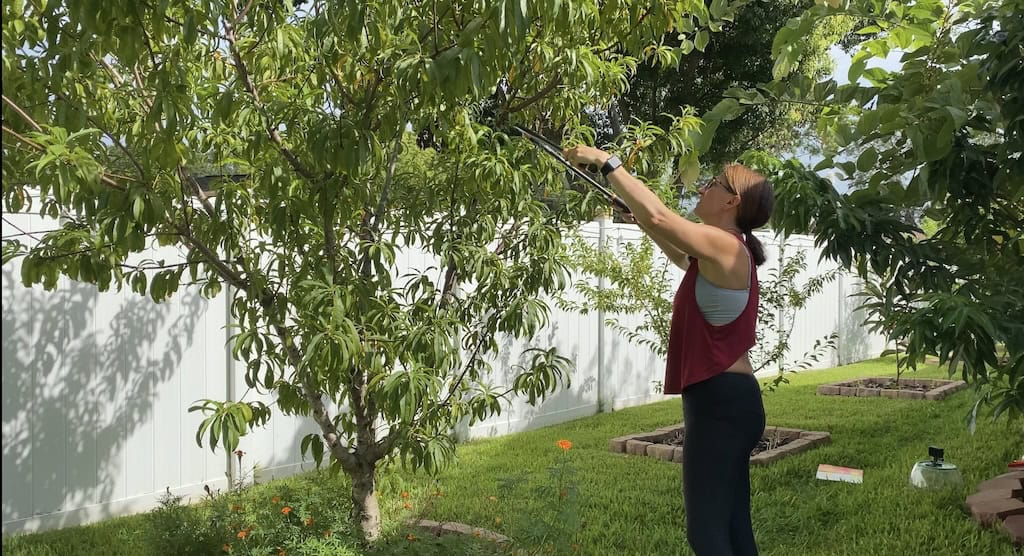Last Updated on February 8, 2024 by Homegrown Florida
Are you a novice gardener eager to embark on a journey of growing your own tomatoes from seed? Look no further! In this comprehensive guide, I’ll walk you through the entire process, from selecting the right tomato varieties to nurturing your seedlings and caring for mature plants. Get ready to equip yourself with the knowledge and skills needed to cultivate healthy and thriving tomato plants. Let’s dive in!
Choosing the Right Tomato Varieties:
Tomatoes are a staple in many gardens, offering a plethora of shapes, sizes, and growing habits. To make the best choices for your garden, it’s essential to understand the different types of tomatoes available. There are primarily two main types: determinate (bush tomatoes) and indeterminate (vining or climbing tomatoes). Determinate varieties typically grow to a predetermined size and produce fruit all at once, making them ideal for smaller spaces or container gardening. Indeterminate varieties, on the other hand, continue to grow and produce fruit throughout the season, requiring more support but offering a continuous harvest.
Varieties for Florida’s Climate:
Florida’s hot and humid climate presents unique challenges for tomato growers. However, there are several varieties specifically bred to thrive in these conditions. Among them are heat-tolerant options like Everglade and red currant tomatoes, which can withstand the intense temperatures of the Florida summer. Additionally, a mix of determinate and indeterminate varieties such as Floradade, Homestead, Heatmaster, Neptune, and Amelia offer a range of options for Florida gardeners, catering to different preferences and growing environments.

Starting Tomatoes from Seed:
Best Time for Planting in Florida:
In Florida, the timing of planting tomatoes from seed differs from other regions due to the state’s distinct growing seasons. It’s recommended to start tomato seeds in August and February to align with Florida’s climate and maximize yield. Planting during these months allows for the establishment of strong, healthy plants before the extremes of summer heat or winter cold set in.
Germination Methods:
When starting tomatoes from seed, there are two main germination methods to consider: traditional trays and the AeroGarden indoor hydroponic system. While traditional trays offer a cost-effective and straightforward approach, the AeroGarden system provides convenience and efficient growth by utilizing hydroponic technology.

Potting Up and Transplanting:
Gradual Transition with Hardening Off:
Before transplanting seedlings into their permanent outdoor location, it’s essential to harden them off gradually. This process involves exposing the plants to outdoor conditions incrementally, allowing them to acclimate to sunlight, wind, and temperature fluctuations. Hardening off reduces the risk of transplant shock and promotes stronger, more resilient plants. This applies to hot weather, as well as cold.
Transplanting Tips:
When transplanting tomato seedlings, attention to detail is key. Proper potting up, selecting an appropriate location, and planting with care ensure the best possible start for your plants. Considerations such as planting depth and the addition of granular fertilizer contribute to robust root development and overall plant health.

Care and Maintenance:
Watering and Mulching:
Consistent watering is crucial for tomato plants, especially in Florida’s hot climate. Mulching serves as a valuable tool for moisture retention and weed suppression, helping to conserve water and maintain a healthy growing environment for your tomatoes.
Staking, Pruning, and Disease Prevention:
Supporting indeterminate tomato varieties through staking and pruning promotes proper airflow and reduces the risk of disease. Simple techniques for pruning, along with a homemade hydrogen peroxide spray, offer effective strategies for disease prevention and overall plant health.

Harvesting Your Bounty:
Perfect Timing for Harvest:
Knowing when to harvest tomatoes is essential for maximizing flavor and yield. Factors such as pests, rain, and frost influence the ideal timing for picking ripe fruit. It may be nessesary to harvest the tomatoes while they are still green if you are battling tons of rainfall, increased pest pressure, or an expected frost. Most of these green tomatoes will ripen on the counter if given enough time.
Whether you’re drawn to the lower cost, superior taste, or the satisfaction of growing your own produce, there are countless reasons to cultivate tomatoes from seed. This comprehensive guide equips you with the knowledge and tools needed for a successful homegrown tomato experience in Florida’s unique climate. Happy gardening!



